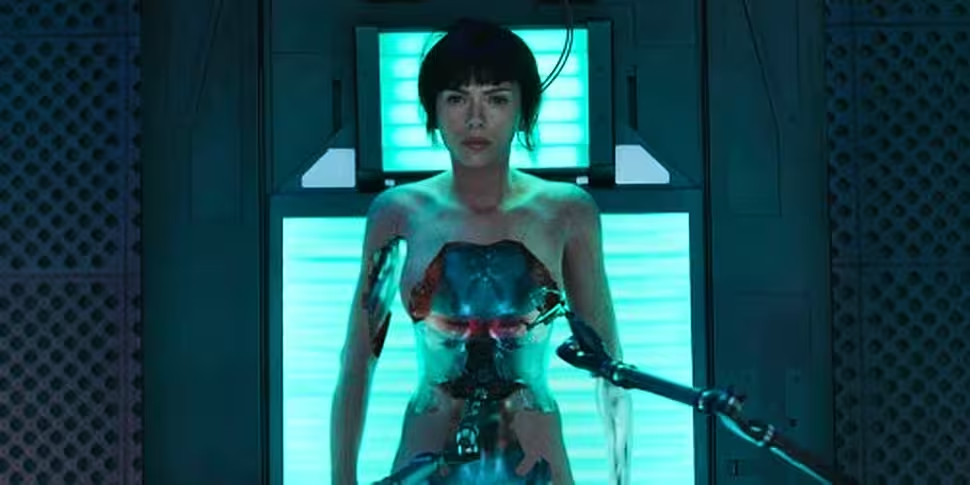It’s hard to understate the influence the original Ghost in the Shell, a Japanese anime that became one of the first to cross over to western audiences, has in the history of modern cinema.
Released in 1995, Mamoru Oshii’s film, the story of a female cyborg grappling with what remains of her humanity, was a touchstone moment in the science-fiction canon. Ghost in the Shell is frequently and justly mentioned in the same breath as Blade Runner and The Matrix, a towering achievement in originality, the legacy of which has been decades of derivative knock-offs.
So too with director Rupert Sanders’ 2017 update, so shiny and so secondhand, its cast of human characters surprisingly lacking the humanity of their animated peers.
When Scarlett Johansson was declared the star to flesh out the lead role of Major, a woman whose brain had been merged with synthesised sinews and figure-hugging latex, it was not without controversy.
Yet again, Hollywood, in its coffer-shaking wisdom, had whitewashed another piece of foreign culture, replacing Asian characters with western actors in almost all of the major roles. Things were not helped with rumours that the production toyed with the idea of digitally altering the Avengers actress to enhance the Asian part of her Caucasian features.
Nor an ill-fated marketing campaign asking fans to grapple with the philosophical question “Who are you?” – with the answer swiftly turning out to be justifiably upset trolls.
In response to that controversy, Johansson has been paying attention to the pitfalls to which Iron Fist star Finn Jones has repeatedly succumbed during his recent press tour. “I certainly would never presume to play another race of a person,” Johansson said. “Diversity is important in Hollywood, and I would never want to feel like I was playing a character that was offensive.”
Appropriate behaviour from the actress, who also deflected with how rare an opportunity it was for a woman to lead a potential franchise, and her Major, from my privileged position, avoided being offensive. That her performance also avoids being interesting is the real problem with a perfectly fine and instantly forgettable film.
Ghost in the Shell kicks off with the slickest piece of How it’s Made production-line porn ever seen. Mira Killian, the survivor of an attack, awakes to the synthetic smile of Juliette Binoche, informing her that her brain survives inside “a synthetic shell.”
A year later, and now a member of the anti-terrorist unit Section 9, and Mira’s been promoted to Major, a base-jumping, gun-toting, one-woman super agent, who plays by her own rules despite those regulations having been coded within her.
In a visually striking opening sequence, Major finds herself on the trail of Kuze (Michael Carmen Pitt), a mysterious hacker taking out key players in the Hanka Corporation, the robotics laboratory that built our heroine. Aided by Borgen’s Pilou Asbæk (think Zoolander’s Mugatu crossed with Sonic the Hedgehog’s Doctor Robotnik), Major starts to uncover a conspiracy that even those unfamiliar with the Japanese original will be able to see coming a mile away.
Routine is the order of the day here, with the film’s lavish design reminding us that as the director of this and Snow White & the Huntsman, Sanders’ speciality lies in constructing empty stories that look pretty. And it does, his futuristic city counterbalanced by neo-brutalist squalor and eye-popping holograms. But its more-is-more aesthetic, also applied to the mechanical upgrades the human characters endure, does seem to swamp the film at times, your gaze so chockablock with computer-generated images that sometimes you just wish Sanders would focus on telling a better story.
Nor is he particularly adept at coaxing charismatic performances out of his stars. Johansson, so chilling as the alien creature in Under the Skin coming to terms with her conscience, does rote robotic here, handling the physicality of it well, but it would take a medium to find the ghost hiding inside.
As the villain, Pitt’s performance seems to have been mostly informed by the Stephen Hawking School of Speech & Drama, and everyone loses the limelight to veteran Japanese star Takeshi Kitano, who rarely rises from his seat but never fails to rise to the occasion.
Verdict: Ghost in the Shell never ventures into boring territory, but never steps outside its comfort zone. As a sumptuously gilded piece of sci-fi cinema, its spectacle cannot mask how much it lacks in soul.
Ghost in the Shell (15A/106mins) is released nationwide on March 31st









